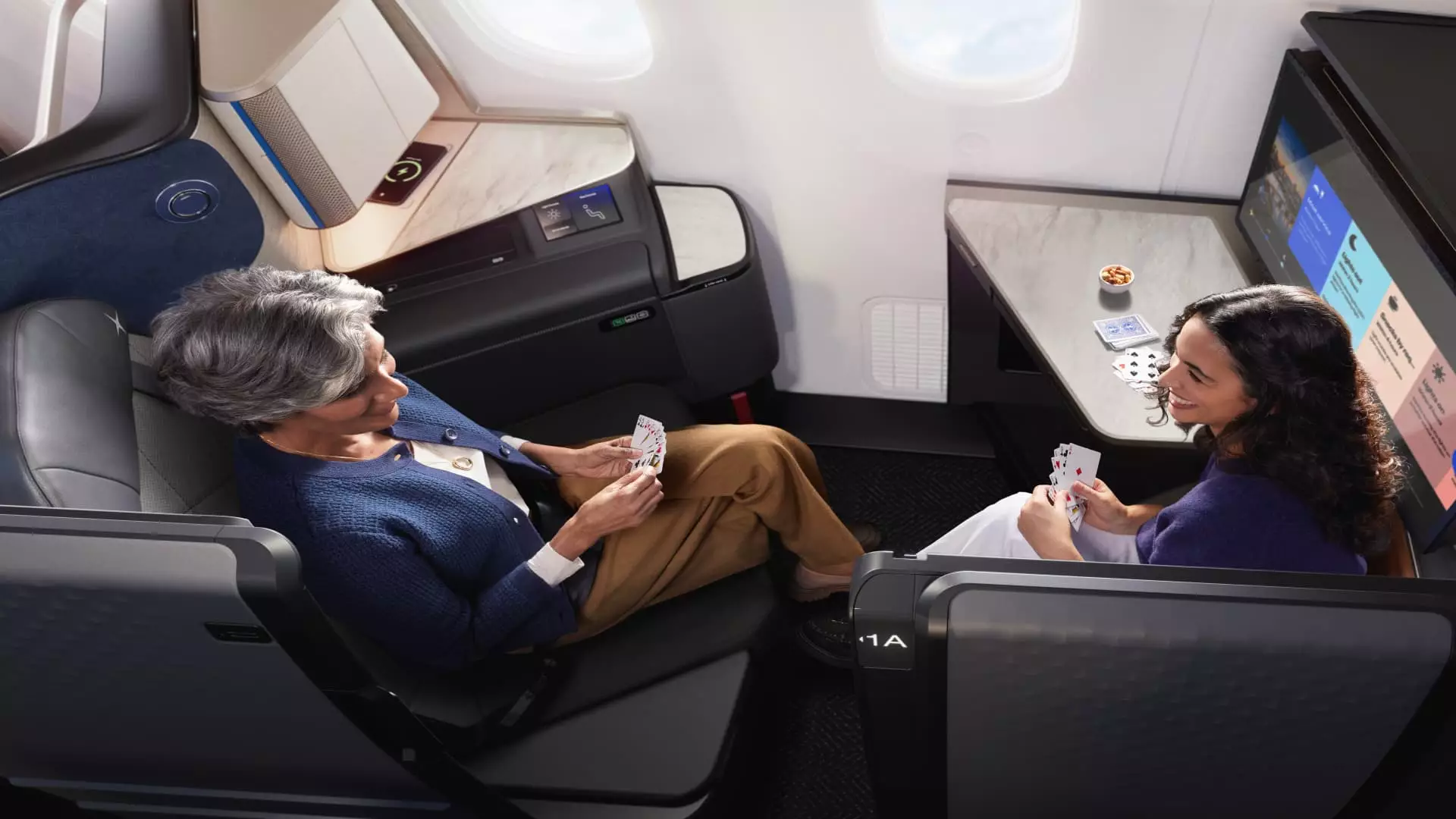In 2023, the contest among U.S. airlines for supremacy in the international business-class market reflects a broader societal trend towards luxury as a form of status symbol. It seems as though every week reveals new “suite” designs, upgraded seat configurations, and an endless array of high-end amenities. But ultimately, is this ongoing extravagance merely a superficial show designed to capture the wealthier traveler, or does it signify a genuine shift in consumer expectations? Airlines are now vying for business travelers willing to pay a premium for an experience that can only be likened to a five-star hotel in the sky.
American Airlines recently unveiled its innovative business-class “suites,” a move that exemplifies the industry’s shift toward enhancing passenger experience through features like privacy doors and spacious seating. This design element isn’t just aesthetic; it taps into a collective desire for exclusivity and comfort—traits traditionally associated with high-end travel. Meanwhile, United Airlines has thrown its hat into the ring with similar initiatives, positioning itself as a front-runner in this space by introducing additional premiums such as the “Polaris Studio,” which is designed for enhanced comfort and space.
The question arises: are airlines like American trying too hard to differentiate themselves in a crowded market? This escalation in luxury is both a response to consumer demands and a calculated gamble in an industry characterized by narrow profit margins. With Delta Air Lines leading the charge as the most profitable U.S. airline, competitors are scrambling to catch up, aiming not just to survive but to thrive by catering to a wealthier demographic.
The Cost of Luxury: Who Will Foot the Bill?
Luxury comes with a price, and as American Airlines lists fares as high as $5,747 for a business-class suite, it is evident that only those with deep pockets can afford such indulgence. It raises the important question of the sustainability of such pricing models. Are consumers inclined to spend more, and are they willing to do so despite an uncertain economic climate? Business-class tickets largely remain a privilege, and as airlines cater to a niche market, the financial implications of such services weigh heavily on airline executives’ minds.
Moreover, while higher costs for premium services can be justified through enhanced experiences, the critical mass of travelers might be dwindling. Airlines need to ensure that while they ramp up their offerings, they retain the everyday business traveler whose loyalty can make or break their bottom line. Offering options that are high-end yet accessible is essential; otherwise, these elite carriers risk alienating their core base.
Luxury Marketing: The Role of Psychological Appeal
Marketing an airline’s latest luxury offerings requires more than just showcasing plush seats and gourmet foods; it taps deeply into human psychology. People aren’t just flying to arrive at a destination; they’re crafting an experience—one that allows them to detach from the mundanity of everyday life. Luxury air travel embodies an escape, a cocoon of comfort that shields them from the perils of air travel chaos.
As Robert Mann pointedly noted, “the experience in economy is so bad” that it drives consumers toward more premium options. This comparison is not merely surface-level but rather speaks to the broader contextual factors affecting consumer choice. In an era where comfort is increasingly a commodity, the well-heeled consumer will gravitate toward business class as a sanctuary.
This reflects a systemic shift where simple travel transforms into a marketable experience, cashing in on the desire for both comfort and status. Airlines therefore have leverage, as the differentiation between economy and business class continues to blur, prompting them to innovate incessantly.
A Competitive Landscape: The Role of Global Carriers
Among U.S. carriers, the competition is fierce, but international airlines have long been setting the gold standard for amenities. Emirates, for example, offers a unique experience with onboard showers and unlimited caviar service, elevating their first-class cabins into realms untouchable by American and United. As U.S. airlines attempt to match these features on a domestic front, they find themselves in an uphill battle, with their innovations still falling short.
The dichotomy between American consumer expectations and the offerings of foreign airlines illustrates a palpable gap in the luxury travel market. It’s a league of its own one where only the best will thrive. The allure of international carriers often makes it difficult for U.S. airlines to compete on an equal playing field, as higher tiers of service from foreign airlines remain benchmarks that define luxury.
This phenomenon signals a crucial need for American airlines to brace themselves for an evolving industry landscape where customers increasingly expect both extravagance and exceptional service. The stakes are high, and each new rollout of upgraded business-class offerings must be measured against the dazzling international competition.
As the airline industry propels itself into a future defined by these elevated experiences, consumers are watching—not just to see what’s being offered today, but to gauge what this extravagant format of air travel will look like tomorrow. The dawn of a new era in airline luxury is ripe with potential—one that could redefine what it means to traverse the skies.

